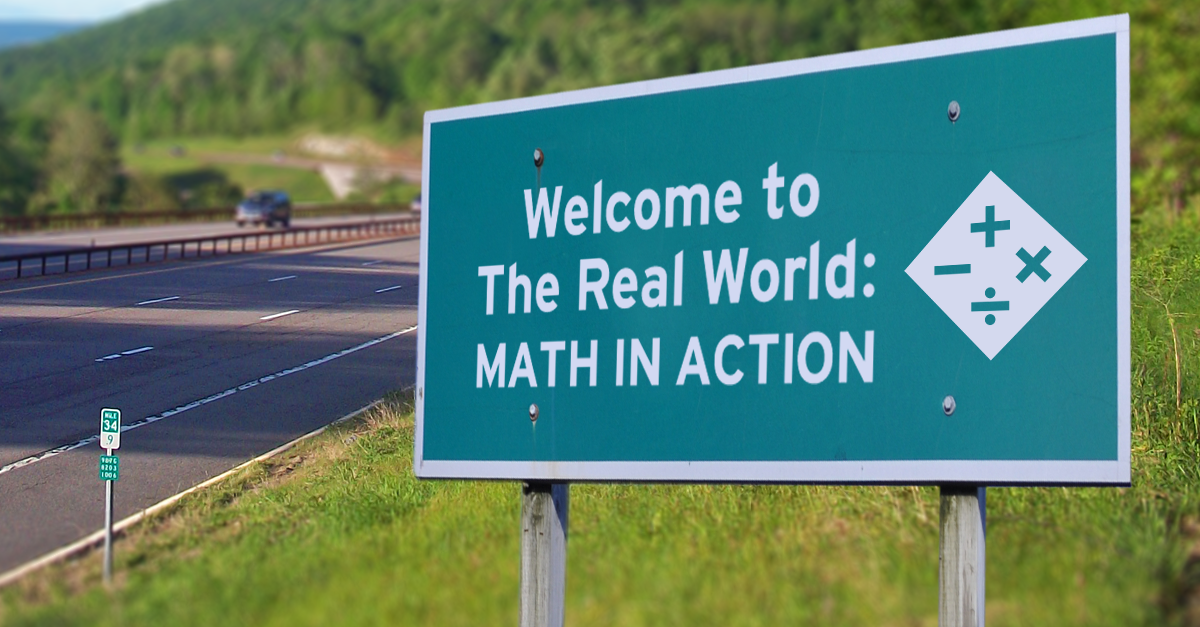
Be aware of the ways that math springs up naturally in day-to-day activities and seize the opportunities to show math in action in the real world.
Real World Math
When I was growing up, my dad would work on my math skills by giving my brothers and me real-life math problems. On long trips in the car, he would have us calculate how fast we were going by measuring the time it took to get from one mile marker to the next. My dad would also have us calculate how much gas was left in the tank and how long it would take to arrive at our destination. These challenges entertained us and sharpened our math skills and showed us practical applications for those skills.
Learning math that seems all theoretical with no practical application can be frustrating; we’ve all heard or said many times “how will I even use this in my everyday life?” By giving us these math challenges that sprung up naturally in a real-life context, my dad taught us that math is valuable and practical; we learned how to use math but we also acquired implicit values that said math is something to be embraced and used, not feared or despised.
There are many ways to teach math in a real-life context. Take your children shopping and have them keep track of the total bill cost. Have them compare prices of similar foods to see which is the best price per unit. Ask your kids to calculate the tip next time you go out to eat. This not only teaches percentages but also communicates the importance of tipping. With your older children, perhaps you begin teaching them how to balance a checkbook.
It is important to communicate the value of math to your children. If you’re not using math regularly or are complaining about having to use math, then that is the value you are communicating.




Leave a Reply